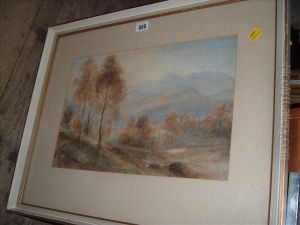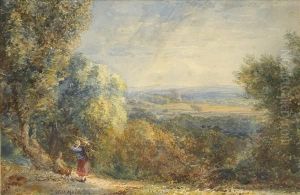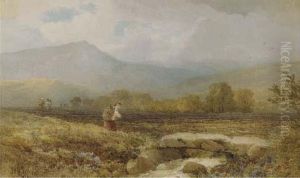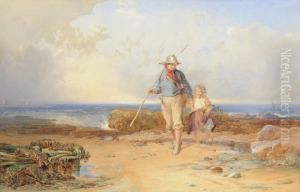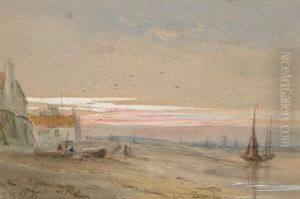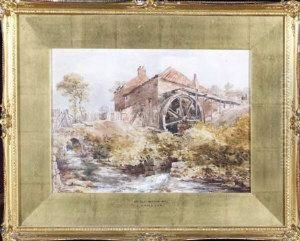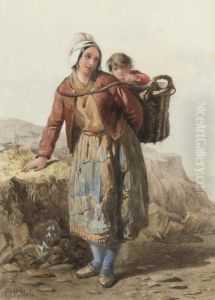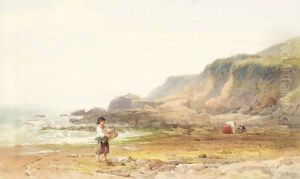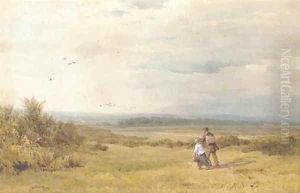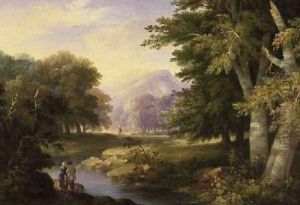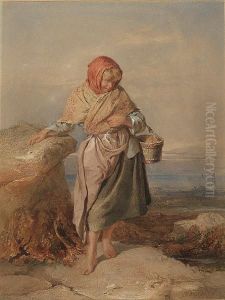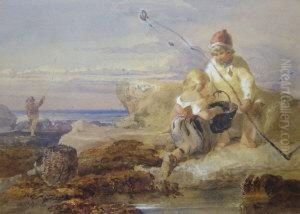John Henry Mole Paintings
John Henry Mole was a notable English watercolourist and miniaturist born in Alnwick, Northumberland, in 1814. Mole was initially apprenticed to a solicitor, but his passion for art led him to pursue a career in painting. He moved to London in 1831, where he gained considerable recognition for his artistic talents.
Mole became a member of the New Society of Painters in Water Colours in 1833 and later served as the Vice President of the Society, which was later renamed the Royal Institute of Painters in Water Colours. His artistic style was characterized by its delicate touch and detailed brushwork, which was well suited to the watercolour medium.
Throughout his career, Mole exhibited regularly at the Royal Academy and the British Institution. His subjects were varied, including landscapes, genre scenes, and portraiture. He had a particular talent for capturing the soft and atmospheric qualities of the English countryside and was also known for his depictions of children and rural life.
Mole's works were appreciated for their charm and technical skill, and he garnered a respectable following during his lifetime. However, his popularity waned after his death in 1886, and he is less well-known today compared to some of his contemporaries. Nonetheless, his contributions to English watercolour painting remain significant, and his works are held in several collections, including the Victoria and Albert Museum in London.
Mole's personal life was marked by tragedy, as he outlived his wife and several of his children. Despite his personal losses, he continued to paint and exhibit until his later years. His dedication to his craft and his ability to convey the subtleties of light and color in his watercolours have left a lasting impression on the art world.




